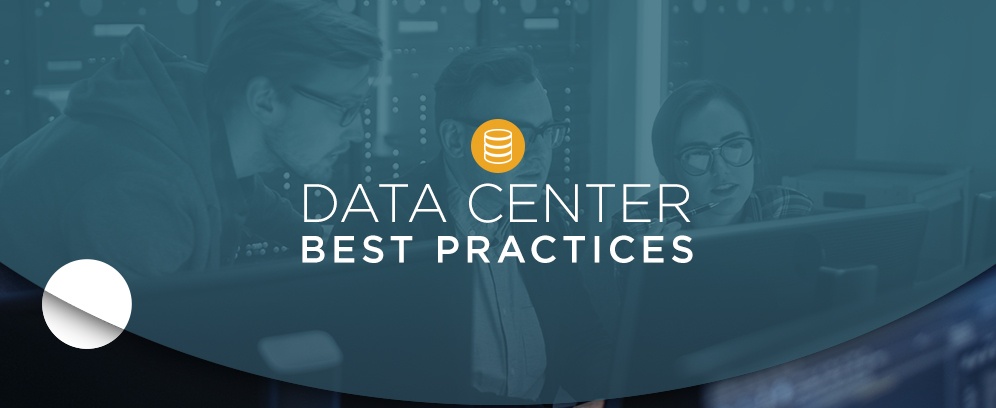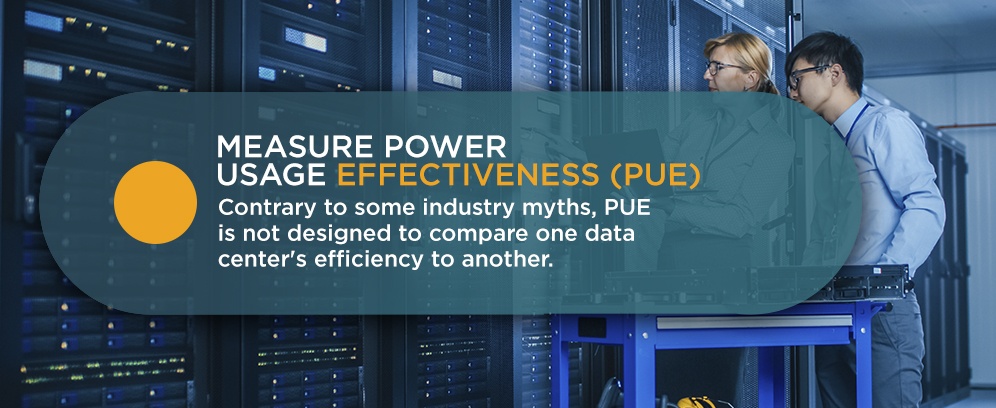Data Center Best Practices

When compared to regular office buildings, data centers consume a massive amount of energy. With how much information gets stored in servers, and how much power the equipment requires to run and stay within a viable temperature range, it’s no surprise many data centers struggle to bring costs down and maintain efficient operations. So, what standards do the best data centers use to improve energy efficiency, structure and store data, and increase their density without expanding floor space?
Consider these five best practices for maintaining a data center, and use these tips to optimize your operations.
1. Ensure Good Data Hygiene
Most companies store massive amounts of unstructured data thanks to cheaper solid-state drives (SSDs) and the ability to collect from more sources, like networks and Internet of Things (IoT) devices. While this data is critical for powerful analytics programs, you might never use a lot of it. Redundant, obsolete and trivial (ROT) data makes up about 85% of all enterprise data. Usually, an initial analysis is enough to determine which data your company needs.
Here’s how you develop and maintain an ongoing data hygiene strategy:
- Locate all data: A lot of your data may be stored on laptops, old hard drives, servers, removable media or mobile devices. The first step is to identify all sources of data you currently have.
- Categorize data by importance: Data should be grouped into three classifications — business-critical, necessary for compliance and ROT. Then, all compliance data can be stored appropriately and business-critical data fed into analytics programs.
- Build an ongoing program for classification: Overhauling your data to remove unnecessary information is just the beginning. To keep your data center running at optimal efficiency, you need a way to continue classifying data as it comes into your system. By doing this, you can store data in the appropriate locations and remove incoming ROT most efficiently.
- Securely erase unnecessary data: Getting rid of ROT requires compliance with data security laws, such as the EU General Data Protection Regulation (EU GDPR). Your data hygiene strategy should have a plan for removing data once it’s reached the end of its usable life and identify ROT throughout the data lifecycle. The International Data Sanitization Consortium offers resources on data hygiene best practices.
Rooting out ROT and freeing up valuable space decreases cooling demands and saves data centers money and energy. Learn more about DataSpan’s data eradication services.
2. Optimize Floor Space
Whether you have a small data closet or a colocated data center serving many customers, floor space is one of your vital assets. Anything you can do to minimize the space required to store all necessary data, especially the footprint of equipment, improves the efficiency of the data center.
The first step in this process is to consider your current and future loads as you make improvements. As you add new equipment to your facility down the line, an ad-hoc approach will seriously hinder your spacial efficiency. Using modular cabinets and racking allows you to adjust your equipment arrangements as needed. The storage equipment should be able to hold a more massive load than is currently required to account for new hardware and evolving business needs. The system should have the means to maximize vertical space and minimize the footprint, so you can increase the density of your data without needing more real estate and infrastructure.
While the lifecycle of a server is three to five years, it may become necessary to replace them sooner. As better designs can house more data in less floor space, and other improvements maximize power usage, it will likely make good business sense to replace servers before the three-year mark. So, it is crucial to have practices in place to transfer data to new servers, decommission old servers and secure loose drives after transfer. Just the same, purchasing decisions should always prioritize compact equipment and servers.
Remember that messy cables are unacceptable in a data center environment. They are dangerous, take up unnecessary space and slow down operations. To combat this, you should implement a robust cable structure and always look for smaller-diameter cables that have connectivity for mixed media and high-density data. Design under-floor and overhead cable storage.
Also, consider the best configurations for floor tiles. This practice is crucial to prevent short-circuiting and can optimize air distribution throughout the facility.

3. Measure Power Usage Effectiveness (PUE)
The old saying “you manage what you measure” becomes crucial for improving energy efficiency in data centers. Among the most-accepted practices for measuring power usage and calculating efficiency is Power Usage Effectiveness (PUE). It’s a calculation of the total amount of power your data center uses divided by the energy your IT equipment uses.
Your PUE calculation will give you a number between one and three, which translates to how effective your IT load is. The lower your PUE, the more efficient your setup.
- PUE 3.0: Very inefficient
- PUE 2.5: Inefficient
- PUE 2.0: Average
- PUE 1.5: Efficient
- PUE 1.2: Very efficient
Contrary to some industry myths, PUE is not designed to compare one data center’s efficiency to another. Instead, your PUE is a measure for your current energy efficiency to help the individual facility improve. You should benchmark your PUE, implement strategies to lower your score, and then measure your PUE again to see if the measures improve your outcome.
Calculating your PUE requires taking regular measurements often. Take measures on different days and times of day to get a complete picture of your usage. It’s even better if you can access your PUE in real-time, continuous data. The idea is to monitor your efforts to improve your energy efficiency to understand what is working.
Data Center Infrastructure Management (DCIM) software can be a helpful tool because it accumulates data on power usage and airflow to increase efficiency.
4. Manage Airflow and Cooling
Appropriate airflow is a critical aspect of data center maintenance, and overheating is one of the leading causes of downtime. Best practices for airflow are essential for increasing energy efficiency in data centers. The 2011 Thermal Guidelines for Data Processing Environments laid out by the American Society of Heating, Refrigerating and Air Conditioning Engineers (ASHRAE), breaks down airflow practices into two groups — recommended and allowable settings. The more you can work inside the recommended settings, the better your airflow and energy efficiency will be.
ASHRAE recommends data centers keep their maximum temperature at 80.6 degrees Fahrenheit. While anything between 95 and 80.6 degrees is allowable, you’ll get the most energy efficiency below 80.6 degrees. Still, this temperature is higher than that at which many data centers currently operate. Running your cold aisle at 70 degrees wastes energy, so raising the temperature can translate to significant savings.
Another way to improve airflow is to group equipment with similar heat load densities together. Organizing this way allows you to concentrate your cool air paths. Be sure to plan the air intake and heat exhaust paths for your hot and cold aisles to minimize mixing warm and cool air. Be sure to create barriers and seal openings to eliminate air recirculation and avoid obstructing the cooling air patterns by using underfloor and overhead cable corridors.
5. Optimize Power Distribution
An effective way to optimize power distribution losses is by eliminating as many power conversions as possible. In many data centers, the uninterruptible power supply (UPS) is run by rechargeable batteries. While those batteries store Direct Current (DC) power, the power coming in is Alternating Current (AC). So, the UPS must first convert AC to DC. When the electricity leaves the batteries, it’s converted back to AC. To run their servers, most data centers have to turn this power back to DC. To minimize these conversions, you can use servers with batteries connected to the trays, cutting down on unnecessary conversions.
Another way to conserve energy and maximize power distribution efficiency is to use DCIM software. The system collects data on power and cooling usage, ensures all new data and servers are getting efficient deployment while monitoring the health of your data center’s infrastructure. You can also incorporate an economizer to save money, energy and the environment.
Get State of the Art Technology From DataSpan
Best practices in data centers are continually evolving, and upgrading to a more efficient, lower footprint infrastructure is the key to staying ahead. DataSpan has the latest data storage solutions, letting you optimize everything from airflow and cooling to cabling and power conservation. We can also audit your IT assets and analyze your airflow to align your data center with current best practices. Learn more about our full range of products and solutions for data centers today.








